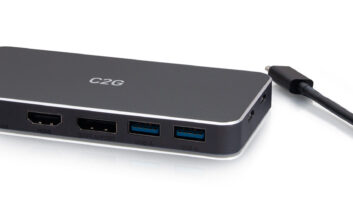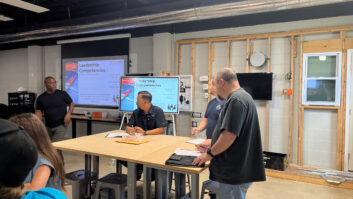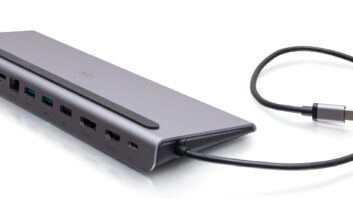Many high-end home theater owners over the years have requested Star Wars and Star Trek themed rooms. This is the first time, actual astronauts have installed a theater system.

Ryan Gustafson, chief designer, president, and CEO of Screen Innovations prepping his company’s projection screen at NASA.
Screen Innovations (SI) were recently invited by the National Aeronautics and Space Administration (NASA) to create the first projection-screen for use in outer space, aboard the International Space Station (ISS). On April 14, 2015, the rocket SpaceX 6 lifted off from Cape Canaveral, FL, carrying the screen to its permanent home among the stars.
For this one-of-a-kind application, Screen Innovations developed the ISS ViewScreen a portable, 65-inch, ambient-light–rejecting, zero-gravity screen that will replace the13-inch, tablet-sized displays that crewmembers have been using to communicate with Mission Control. Crewmembers will now enjoy a much larger, enhanced viewing experience, video chat with their families, and conduct training and simulated operations that previously had been possible only with laptop computers.
Ryan Gustafson, chief designer, president, and CEO of Screen Innovations, said, “Working with NASA is a dream come true! As a company, SI is a fun-loving group of innovative, dedicated professionals who continue to push the envelope every day. Since its founding in 1958, NASA has been devoted to innovation and to pioneering the age of space travel and exploration. It’s safe to say that SI has once again gone where no other screen company has gone before.”
The Process
After meeting with NASA, SI knew it had to construct a screen that was not only portable, but could be setup quickly and easily in any module on the ISS. It took nearly eight months for the SI engineering team to overcome the challenges of the interior of the ISS, which include limited space and an interior that is brightly lit at all times. Because a permanent installation was not an option, SI had to develop a screen that could be easily stored when not in use—a difficult predicament in zero gravity. “Fixed is easy, but a portable setup brings all sorts of challenges to the table,” said Tom Nugent, Technology Specialist at SI.
The dimensions of the packaged screen when collapsed for storage, could be no larger than those of a standard mailing tube: roughly 3 feet long and 2.5 inches in diameter. To preserve the projector’s contrast ratios, the design team chose SI’s ambient-light-rejecting Slate screen material. These challenges tested the SI team’s ability to deliver on a longtime company motto: to provide “two-piece projection in any environment.” Ryan Gustafson said, “Space—it’s the ultimate environment. If we can put a screen there, we can put a screen anywhere on Earth.”
To view a video about the development of the NASA screen and view further background information visit: www.screeninnovations.com/space.







